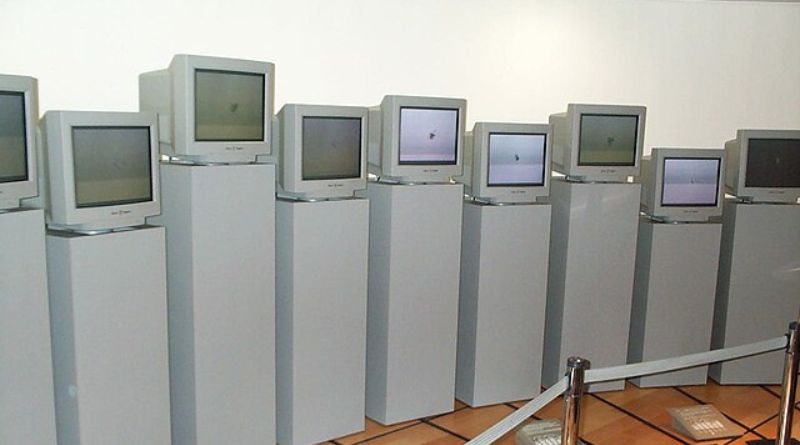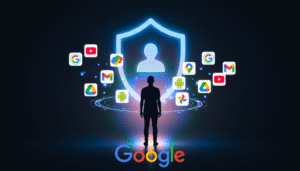
Dive into the fascinating world of computers, these ubiquitous machines that have become integral to our daily lives, from the smartphones we carry to the supercomputers driving scientific advancements. But how did we get here? How did these complex devices evolve from simple counting tools to the powerful engines of innovation they are today?
Join us on a journey through the history of computers, exploring their development, the diverse tasks they perform, and the ever-evolving digital landscape.
From Abacus to Analytical Engine: The Early Days of Computing
The history of computation predates the modern computer by centuries. Early humans used rudimentary tools like the abacus, a counting frame with beads to perform basic arithmetic operations. This simple yet effective device laid the groundwork for more advanced mechanical calculators.
In the 17th century, Blaise Pascal invented the Pascaline, an early mechanical calculator capable of performing addition and subtraction. The 1800s saw further advancements, culminating in the visionary designs of Charles Babbage. His Analytical Engine, conceptualized in the early 19th century, is often regarded as the first mechanical computer. Although never completed, Babbage’s design included elements such as a central processing unit, memory, and input/output capabilities, concepts that underpin modern computer architecture.
The Dawn of the Electronic Computer: Entering the Information Age
The 20th century brought a revolution with the advent of electronic computers. During World War II, the first electronic computers, such as the ENIAC (Electronic Numerical Integrator and Computer), were developed. These colossal machines, occupying entire rooms with vacuum tubes, provided unprecedented processing power, making them invaluable for complex scientific and military computations.
A pivotal breakthrough came in 1947 with the invention of the transistor, a tiny electronic switch that replaced bulky vacuum tubes. This innovation led to smaller, faster, and more reliable computers. The 1950s saw the introduction of the first commercial computers, such as the UNIVAC I, which played a crucial role in processing data for the 1952 U.S. presidential election.
Inside the Machine: Understanding Computer Components
To understand how computers work, let’s look at their fundamental components:
Central Processing Unit (CPU): Known as the “brain” of the computer, the CPU executes instructions and performs calculations. It consists of two main parts: the Control Unit, which fetches and decodes instructions, and the Arithmetic Logic Unit (ALU), which handles mathematical and logical operations.
Memory (RAM): Random Access Memory (RAM) acts as the computer’s short-term memory, storing data currently in use by the CPU. RAM is volatile, meaning it loses data when the computer is turned off.
Storage Devices: Hard Disk Drives (HDDs) and Solid State Drives (SSDs) are non-volatile storage devices that retain data permanently. They store programs, documents, and other files accessible even after the computer is powered down.
Input Devices: Tools like keyboards, mice, touchscreens, scanners, and webcams allow users to communicate with the computer, converting actions into digital signals.
Output Devices: Monitors, printers, speakers, and projectors display, print, or play information processed by the computer.
The Software Symphony: The Invisible Conductor
Hardware alone doesn’t make a computer function. Software, the set of instructions that tell the hardware what to do, is the invisible conductor of this technological symphony. There are two main types of software:
System Software: This manages the computer’s resources and provides a platform for running other programs. The operating system (OS), like Windows, macOS, or Android, is the core piece of system software.
Application Software: These programs perform specific tasks, such as word processing (Microsoft Word), web browsing (Google Chrome), or video editing (Adobe Premiere Pro).
The interplay between hardware and software allows computers to perform a vast array of tasks, from composing emails to designing skyscrapers.
The Digital Age: Transforming Our World
Computers have dramatically reshaped our world. Here are a few ways they’ve transformed various sectors:
Revolutionizing Communication: Instant messaging, video conferencing, and social media platforms have redefined how we connect globally.
Transforming Education: Computers have made learning more accessible through online resources, interactive simulations, and digital tools catering to diverse learning styles.
Advancing Scientific Discovery: From analyzing complex datasets to simulating scientific phenomena, computers have become indispensable in research, accelerating our understanding of everything from genetics to space.
Redefining Entertainment: Personal computers, gaming consoles, and streaming services have revolutionized how we consume entertainment, offering immersive games and on-demand media.
Empowering Businesses: Computers have streamlined business operations, from managing inventory to facilitating online sales and remote work, boosting efficiency and productivity across industries.
Computers’ influence extends far beyond these examples, becoming essential in healthcare, finance, government services, and virtually every aspect of modern life.
The Future of Computing: A Glimpse Ahead
As Moore’s Law—predicting the doubling of transistors on a microchip roughly every two years—continues to hold, the evolution of computers shows no signs of slowing down. Here’s a look at what the future might hold:
Artificial Intelligence (AI): AI research is advancing rapidly, with computers learning, adapting, and making decisions. AI holds the potential to revolutionize fields like healthcare and transportation.
Quantum Computing: This emerging technology leverages quantum mechanics principles to perform calculations beyond traditional computers’ capabilities, potentially revolutionizing materials science, drug discovery, and financial modeling.
The Internet of Things (IoT): As more devices connect to the internet, our world is becoming a vast network of interconnected things. IoT has the potential to automate tasks, improve efficiency, and personalize our experiences.
The future of computing promises immense possibilities. However, with this power comes the responsibility to use technology ethically and responsibly. As we forge ahead, ensuring that computers continue to serve humanity and foster a better future is paramount.
Exploring the Vast World of Computing
This article provides a foundational understanding of computers, their history, and their impact. However, the world of computing is vast and ever-changing. Here are some areas for further exploration:
Different Types of Computers: Explore the diverse range of computers, from personal devices and laptops to supercomputers and cloud computing platforms.
Programming: Learn about programming languages like Python, Java, or JavaScript to unlock creative potential and build software applications.
Cybersecurity: As our reliance on computers grows, so do cyber threats. Understanding cybersecurity practices is crucial to protecting data and devices from malicious actors.
Whether you’re a curious beginner or a seasoned tech enthusiast, the world of computers offers endless opportunities for learning and exploration.



